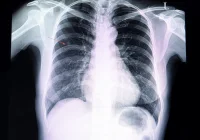Motion artefacts during medical imaging, particularly in craniocervical angiography, pose significant challenges to accurate diagnosis and treatment planning. Digital Subtraction Angiography (DSA), a commonly used technique, suffers from image degradation caused by patient movement. This leads to increased radiation exposure and extended procedure times due to repeated imaging sessions. Traditional methods for reducing motion artefacts in DSA rely on computationally intensive algorithms that struggle to function in real time. However, the development of deep learning-based deformable registration techniques offers a promising solution. A recent Radiology Advances article explored how deformable registration, coupled with unsupervised deep learning, can significantly reduce motion artefacts in craniocervical angiography, improving image quality without sacrificing spatial resolution.
Background on Motion Artifacts and Traditional Solutions
Motion artefacts in DSA occur when there is a misalignment between pre-contrast background images and post-contrast frames, leading to blurred or distorted blood vessel images. Voluntary or involuntary patient movements can cause this misalignment due to respiration or cardiac activity. The resulting artefacts degrade the image quality, which may obscure critical vascular details and compromise diagnostic accuracy.
Traditional methods for addressing these artefacts include key point-based image registration algorithms that apply rigid or elastic transformations to align background and post-contrast images. However, these methods have several limitations. First, they are often computationally intensive, requiring iterative optimization processes that make real-time application impractical. Second, while these algorithms may reduce motion artefacts, they frequently introduce new distortions or fail to preserve the fine vascular details necessary for accurate diagnosis. As a result, these techniques have limited effectiveness in clinical settings, necessitating the development of more advanced solutions.
Deep Learning for Deformable Registration in Angiography
The advent of deep learning, mainly unsupervised learning models, has opened new avenues for improving image registration in DSA. A deformable registration model, built on the HyperMorph framework, presents a fast and efficient method to reduce motion artefacts in craniocervical angiography. Unlike traditional registration methods, deep learning-based models can adapt to complex, non-rigid deformations often seen in medical imaging due to the variability in patient movements.
The key innovation in this approach is the introduction of custom loss functions that enhance the model's ability to handle the presence of iodinated contrast within the blood vessels. By estimating the vessel layer and excluding this layer from the background subtraction process, the model can better focus on aligning the background tissue while preserving the fine details of the vascular structures. This results in clearer, more accurate images free from the misregistration artefacts commonly seen in traditional DSA.
Another advantage of deep learning for deformable registration is the model's speed. In contrast to traditional methods that require iterative optimisation for each frame, the learning-based Background Subtraction Angiography (BSA) model can process each frame in just 30 milliseconds. This makes it viable for real-time application, significantly reducing the need for repeated imaging sessions during clinical procedures.
Clinical Evaluation and Benefits of the Model
The effectiveness of the deep learning-based deformable registration model was evaluated through a series of tests involving 516 studies, comprising over 5,000 angiographic series. In these tests, images processed using the deep learning model were compared to those processed with traditional DSA techniques. Three interventional neuroradiologists reviewed the results, providing blind rankings and Likert scale scores to assess vascular fidelity, subtraction artefacts, and overall image quality.
The results of this evaluation were highly encouraging. The deep learning model significantly outperformed traditional DSA, particularly in reducing subtraction artefacts and improving vascular fidelity. On a five-point Likert scale, the learning-based BSA consistently scored higher across all categories, with overall image quality improving from 2.1 (for traditional DSA) to 3.9 (for the learning-based model). This marked improvement demonstrates the potential for deep learning to revolutionise angiographic imaging, offering clinicians clearer, more reliable images for diagnostic purposes.
Beyond improving image quality, the deep learning model also has the potential to reduce procedure times and radiation exposure. In the evaluation, the need for repeat acquisitions was reduced by up to 87%, as the model was able to correct for motion artefacts in real-time. This reduction in repeat imaging sessions translates directly into shorter procedures, less contrast medium used, and lower radiation doses for patients—critical factors in improving patient safety and comfort.
Limitations and Future Directions
While the results of the deep learning-based deformable registration model are promising, several limitations must be considered. First, the model's performance has been evaluated primarily within the context of craniocervical angiography. It is unclear how well the model will generalise to other anatomical regions or imaging modalities, such as abdominal angiography or cardiac imaging, where motion artefacts may present different challenges. Future studies must explore the model's applicability in these settings to determine its broader clinical utility.
Another limitation is the model's reliance on 2D deformable registration. While this approach effectively addresses in-plane motion, it may struggle to account for more complex 3D motion in fluoroscopic images. This is particularly relevant in cases where patients move in multiple directions during the imaging process. Future research may focus on integrating 3D registration techniques to enhance further the model's robustness and accuracy in a broader range of clinical scenarios.
Additionally, the model's success relies on carefully tuned hyperparameters, which were optimised for the specific dataset used in this study. Different imaging systems, contrast agents, or patient populations may require different hyperparameter settings to achieve optimal results. Future efforts must explore the model's adaptability to various clinical environments and patient groups.
Conclusion
Deep learning-based deformable registration offers a powerful tool for reducing motion artefacts in craniocervical angiography. This model significantly improves image quality and reduces the need for repeat imaging sessions by leveraging unsupervised learning techniques and custom loss functions. The clinical evaluation of the model has demonstrated its effectiveness in enhancing vascular fidelity and reducing subtraction artefacts, making it a valuable asset for neuroradiologists. While there are limitations to the current approach, ongoing research and development hold the potential to expand the model's applicability and improve its performance across a broader range of clinical scenarios. In the future, integrating deep learning models into routine clinical workflows could lead to safer, more efficient imaging procedures with better patient diagnostic outcomes.
Source: Radiology Advances
Image Credit: iStock








